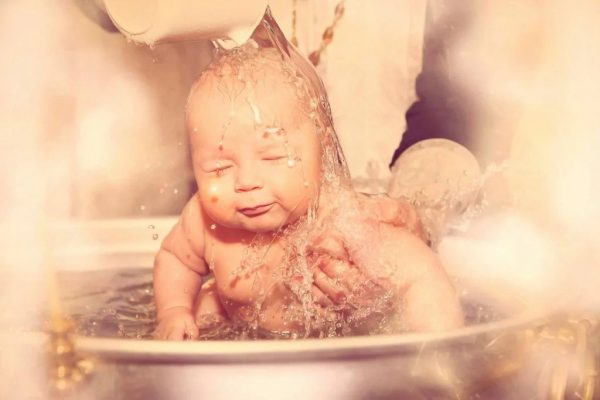Baptisms abound during the season of Theophany, which is popularly called the “Feast of Baptism”, during which Christians commemorate Christ’s baptism by John the Baptist in the River Jordan. Most believers wait for the coming of this feast to baptize their children because they believe in the connection between their children’s baptism and the baptism of Christ. However, Christian theology, starting from the Holy Bible, says something else. Christians do not get baptized because Christ was baptized, but because Christ died and rose from the dead.
There is a difference between Christ’s baptism by John, which was a purification ritual that could be repeated multiple times, about which John was clear when he said to his disciples, “I indeed baptized you with water, but He will baptize you with the Holy Spirit” (Mark 1:8). And Jesus said to the Pharisee Nicodemus, “Most assuredly, I say to you, unless one is born of water and the Spirit, he cannot enter the kingdom of God. 6 That which is born of the flesh is flesh, and that which is born of the Spirit is spirit. Do not marvel that I said to you, ‘You must be born again'” (John 3:5-7).
There is no doubt that the Holy Apostle Paul was the first to talk about baptism as participation in Christ’s death and resurrection. In his Epistle to the Romans, he says, “Or do you not know that as many of us as were baptized into Christ Jesus were baptized into His death? Therefore we were buried with Him through baptism into death, that just as Christ was raised from the dead by the glory of the Father, even so we also should walk in newness of life. For if we have been united together in the likeness of His death, certainly we also shall be in the likeness of His resurrection” (Romans 6:5-3).
The Christian tradition is in agreement, then, in saying that baptism is participation in Christ’s death and resurrection and for this reason it is called a second birth. In this regard, Saint John Chrysostom (d. 407) says, “By baptizing the head in water, the old man is buried, is completely drowned in the depths, and is totally hidden. When the head is raised, the new man takes the place of the old.” Chrysostom likewise confirms this when he says, “As it is the cross and the tomb for Christ, so it is baptism for us.”
As for Saint Ambrose of Milan (d. 397), he says, “Baptism is like death in your descent into the water, and like resurrection in your leaving the water. Just as the resurrection of the Lord, according to the Apostle Paul’s explanation, is a rebirth, your leaving the baptismal font is a rebirth.” Saint Cyril of Jerusalem (d. 386) says, “Just as Christ, who bore all the sins of the world, died in order to raise you up in righteousness by His crushing sin, you go down into the water and you are buried in it just as he was buried in a tomb, so that you may rise and walk in newness of life.” Newness of life is living in the presence of the eternal God, in constant repentance.
Fidelity to baptism requires separation from sin, of which Theodoret of Cyrrhus (d. 466) says, “The mystery of baptism teaches us to separate from sin. Baptism is in the likeness of the Lord’s death. In it, we become participants in Christ’s death and resurrection. Therefore, we must live a new life.” But if one falls into sin, he does not repeat his baptism, but rather repentance is like a constant baptism. One only dies once and so one is only baptized once.
Theodoret offers us a valuable witness to the early practice of baptizing children, something that is rejected by some Protestant sects, when he says, “If the meaning of baptism was limited to the forgiveness of sins, then why do we baptize recently-born children who have not yet known sin? But the mystery of baptism is not limited to this. Rather, it goes beyond this to greater and more perfect gifts. In baptism, there is the promise of the splendors to come. It is the symbol of the coming resurrection, participation in the Lord’s passion and resurrection. It is the badge of salvation, the oil of splendor, the badge of light or more aptly, the light itself.”

















